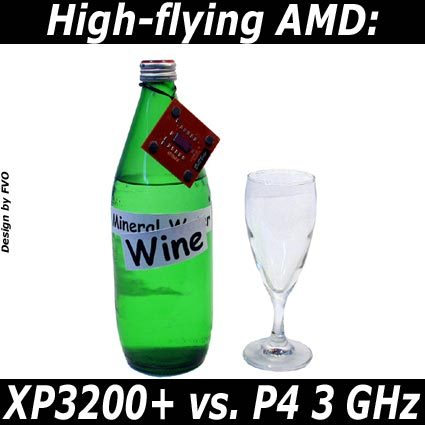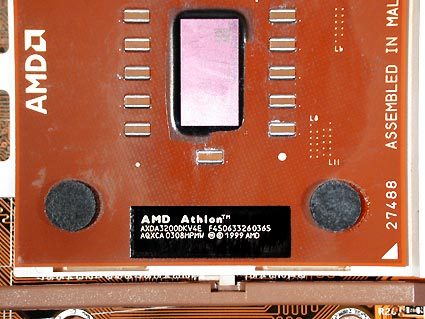High-Flying: AMD Athlon XP 3200+ Squares Off Against Intel P4 3 GHz
Maxed Out: Athlon XP 3200+ With FSB200
This is the 16th processor in the popular XP series (the launch of the 2800 version at 2250 MHz for the press doesn't really count, in our opinion). It represents the 10th stage in the AMD Athlon's evolution, a feat no other processor architecture can claim to match. Since the Athlon design was launched in 1998 - when it began soundly trouncing the Pentium III - AMD has tweaked the processor heavily and locked horns with Intel's P4.
By giving it the "XP 3200 +" label, AMD has presented this latest addition to the XP line as the fastest desktop processor available on the retail market. That's more, the little plus sign after the number should help to inflate expectations, leading some users to automatically assume that this new baby will be, at worst, as fast as a Pentium 4 at 3200 MHz. While it is debatable whether AMD's processor naming convention is a true reflection of the XP's performance, it does the job in so far as positioning AMD in a like for like battle with Intel.
While there may not be a direct clock for clock comparison, the two chips do have one thing in common: their FSBs are clocked at 200 MHz, meaning data is transported more quickly between the CPU and the chipset. However, Intel uses a quad-data rate - known as FSB800 in marketing-speak - while AMD is sticking with double-data rate (FSB400). Maybe there really is no way to compare apples to apples in this processor match-up, but it sure ain't getting any easier trying to remember the "real" numbers for each chip.
The new Athlon XP 3200+ runs at 2200 MHz with an FSB clock of 200 MHz.
One thing that should please all enthusiasts is the fact that this is the first time ever that both sides have decided to go with the same RAM technology - dual DDR400 in CL2 mode. So it's curtains for the arguments of many gripers who have been waging a low-scale war against the Rambus platform for the P4. Rambus is done. End of story.
Get Tom's Hardware's best news and in-depth reviews, straight to your inbox.
Current page: Maxed Out: Athlon XP 3200+ With FSB200
Next Page Athlon XP 3200+: An End To Downward Compatibility?

